CEU (Continuing Education Unit): 2 Credits
Educational aims and objectives
The purpose of this article is to presentthe complexities and the solutions for combining clear aligner therapy with a new, FDA-approved custom dental sleep device.
Expected outcomes
Orthodontic Practice US subscribers can answer the CE questions with the quiz to earn 2 hours of CE from reading this article. Correctly answering the questions will demonstrate the reader can:
- Realize some trends in the growth of clear aligner treatment and the rise of diagnoses of sleep-disordered breathing.
- Realize the integration between orthodontics and dental sleep medicine.
- Identify the clinical benefits of the design ofThe Aligner Sleep Appliance in conjunction with clear aligner therapy.
- See a case where a patient’s orthodontic needs and medical needs were both accounted for during the treat-ment process.

Dr. Payam Ataii discusses a sleep appliance specifically designed to be used in conjunction with clear aligners
Two parallel and related trends
Two parallel and related growth trends are occurring in the US: the growth of clear aligner treatment and the rise of diagnoses for sleep-disordered breathing. Over the past year, over 600 thousand patients in North America sought clear aligner treatment and the market is growing by 28% per year.[1][2][3] New indications for clear aligners are being introduced, and patients increasingly see the esthetic benefits of clear aligners. At the same time, another trend in the U.S. is growing as strongly as clear aligners — the diagnosis of sleep disordered breathing. Approximately 3.5 million sleep tests are ordered each year in the U.S., a number growing at nearly 13% annually.,[4][5]
The prevalence of sleep-disordered breathing is astonishing. The National Center on Sleep Disorders Research (NCSDR), an organization within the National Institute of Health (NIH), states that about 70 million Americans suffer from sleep problems, with approximately 60% of these having a chronic disorder.[6] Given the prevalence in the U.S. population, it is not surprising that orthodontists and general practitioners see many patients in their practice who show signs of sleep disorders that need to be treated. This problem cannot be ignored.[6] The NCSDR cites that “Sleep disorders, sleep deprivation, and sleepiness add an estimated $15.9 billion to the national health care bill.”3 A variety of sleep appliances have been available for years to treat these patients, but the question has always been, “How do we treat patients with sleep disorders while addressing their chief complaint — to fix their smile?” Traditional sleep appliances cannot be used in conjunction with clear aligners since both appliances need to be worn while the patient sleeps. Now, there is a solution to this problem — The Aligner Sleep Appliance® (ASA) is an FDA-cleared, custom device specifically designed to address this issue.
Integrating dental sleep medicine within a clear aligner practice
Dental sleep medicine and orthodontic practices go hand in hand. The correlation between malocclusions and sleep disorders has been established in the journals for some time now.[7] Malocclusions can compromise the space within the oral cavity limiting the capacity and functionality of the tongue. Especially when patients lie on their back during sleep, if malocclusions are limiting the tongue from properly resting at the roof of the palate, there is a high likelihood that these patients will suffer from compromised airways. These compromised airways can present themselves as snoring, as chronic fragmented sleep episodes, such as in the case of Upper Airway Resistance Syndrome, or in more severe cases where the airway is completely blocked by the tongue and/or soft tissues, such as Obstructive Sleep Apnea. With the advent of CBCT technology, practices may better identify mid-facial developmental deficiencies that may be contributing factors to collapsed airways and sleep disorders.
Given these complexities, choosing the right service partners for both clear aligners and dental sleep is important for orthodontic practices. For clear aligners, working with a reputable clear aligner company can be helpful to make the process simple and gain access to the necessary tools. On the dental sleep side, proper diagnosis of the patient’s sleep disorder as well as a comprehensive treatment plan that identifies the orthodontic considerations and type of appliances that may address the patient’s airway is critical. SleepArchiTx is an example of a dental sleep services company that provides this type of expertise with integration of board-certified sleep physicians, orthodontists, and general sleep practitioners.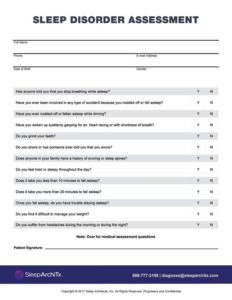
Figure 1: Office patient assessment form
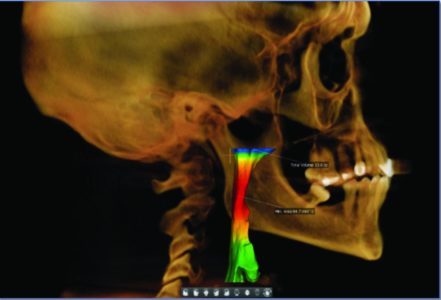
Figure 2: Preoperative CBCT image showing airway
When treating dental sleep patients, it is important to work with board-certified sleep physicians who may diagnose these conditions through high quality home sleep tests or in-lab sleep tests. Most diagnostic companies or sleep laboratories are focused on identifying patients who suffer from Obstructive Sleep Apnea — and that is good — however, there are other breathing disorders that patients will present with. A diagnostic partner should also be able to properly identify the other possible disorders that orthodontists and general practices could treat, such as, Upper Airway Resistance Syndrome or sleep bruxism.
Given the correlation between malocclusions and sleep disorders, working with companies that have orthodontic expertise in treatment planning for sleep cases is imperative. The choice of which appliances to use affects the patient’s comfort and their clinical outcome. Often, dental labs or sleep services companies only offer one or few appliance options and expect those to work with every patient. Orthodontists should not be limited to a single appliance or small handful of choices because factors such as cranio-facial structure and degree of malocclusion will dictate the attributes of the sleep appliance that is needed. In addition, chosen custom sleep appliances must be FDA-cleared and fabricated by an FDA-approved laboratory.
Aligner Sleep Appliance (ASA)®
The Aligner Sleep Appliance ® (ASA), available through SleepArchiTx, is an innovative option that concurrently treats sleep disordered breathing in patients undergoing clear aligner treatment. The ASA is designed to support the jaw in a slightly forward, protrusive position to help maintain an open airway while the orthodontic tooth movements are being addressed with the clear aligners.
Sleep test results have shown that this combination therapy is an effective treatment option for snoring and obstructive sleep apnea patients who are being treated with Invisalign or any other clear aligner treatment.[8]
Figure 3: The Aligner Sleep Appliance (ASA)® is an FDA-cleared dental sleep appliance that fits with clear aligners to enable simultaneous clear aligner and dental sleep treatment, co-invented by Dr. Payam Ataii and Dr. Rob Veis.
How do the appliances work together?
The Aligner Sleep Appliance is a patented, FDA-cleared, custom-made appliance designed to fit over the patient’s clear aligners throughout the course of treatment. To fabricate the ASA, practices submit either a 3D intraoral scan or physical impressions of upper and lower arches. These impressions must be taken while the patient is wearing his/her current clear aligner trays. It should be noted that some intraoral scanners are not able to accurately detect the clear aligners when fitted over the teeth. If that is the case, instead, submit poured cast models, or PVS impressions to SleepArchiTx.
The ASA is fabricated with a proprietary process of calibrating the patient’s final aligner ortho stage. This process allows the patient to use the same sleep appliance during the entire clear aligner treatment. This means that while the patient’s malocclusion is being resolved, and the programmed clear aligner trays are changed every 1-2 weeks, the ASA is designed to accommodate for the estimated tooth movements without being loose or flimsy. During follow-up visits, dentists may also perform chairside titration adjustments to the ASA by controlling the position of the mandible using the bilateral acrylic fins and/or the customized sagittal and horizontal calibration screws.
ASA Case Study
A 29-year old female presented to the practice seeking a better looking smile. During patient evaluation, it wasdetermined that patient felt tired throughout the day, suffered from headaches, and was almost involved in vehicle accident due to being drowsy while driving. The patient’s intraoral evaluation presented with a high palate, narrow dental arches, upper anterior overjet,and lower anterior dental crowding. A sleep study was prescribed, and the patient was diagnosed with Upper Airway Resistance Syndrome (UARS).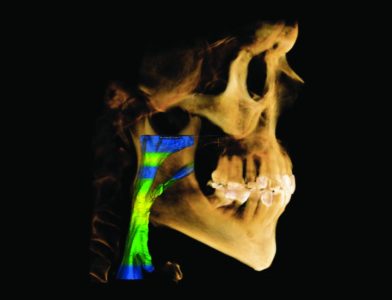
Figure 4: Patient without ASA
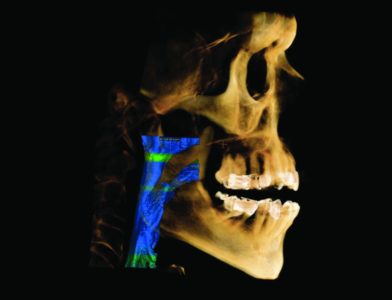
Figure 5: Patient with ASA
Treatment
Combination therapy withInvisaligntrays and Aligner Sleep Appliance. The Invisalign trays were changed weekly during the 6-month course of treatment. The patient was concurrently custom fit with an ASA that repositioned the mandible. Proper positioning was verified with CBCT. One ASA was custom fabricated to adjust to all Invisalign trays. The patients’ narrow arch was addressed by creating space using Invisalign and the ASA.The ASA was adjusted up to 4mm during treatment and used post-treatment in combination with the Vivera®Retention System on the upper arch and a fixed retainer on the lower arch. The patient’s postoperative instructions were to wear the ASA at night both during orthodontic phase as well as post-retention. The same appliance was used throughout the treatment along with stabilization and retention period of the patient’s treatment.
Figure 6: Before
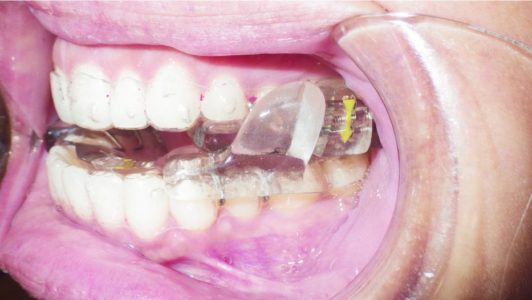
Figure 7: Invisalign® and Aligner Sleep Appliance (ASA)® Treatment
Treatment outcome
The malocclusion was corrected while maintaininga patent airway. The patient’s sleep symptoms of daytime sleepiness, fatigue, and even neck posture showed significant improvement along with better intraoral occlusion and tongue space. A follow-up sleep study confirms that the patient no longer suffers from UARS while wearing the ASA.
Figure 8: After
Conclusion
The Aligner Sleep Appliance was used to successfully treat this patient’s sleep disorder while enabling simultaneous clear aligner treatment. Neither the patient’s orthodontic needs nor her medical needs were compromised during the treatment process. This case highlights how the practices can offer clear aligner treatment and dental sleep treatment thatworks in tandem.
References
- Tindera M. Out Of Silicon Valley, A Billion-Dollar Orthodontics Business Built With Plastic And Patents. Forbes. April 25, 2017. https://www.forbes.com/sites/michelatindera/2017/04/25/out-of-silicon-valley-a-
billion-dollar-orthodontics-business-built-with-plastic-and-patents/#172c562030c2. Accessed August 24, 2017. - Align Technology, Inc. 2016 Annual Report. https://files.shareholder.com/downloads/ALGN/5058245059x0x935800/35244CC1-3ECE-48FE-97B9-EB8D8804134B/SEC-ALGN-1097149-17-9.pdf. https://investor.aligntech.com/results.cfm. Accessed August 24, 2017
- Align Technology, Inc. Financial Results Q2 2017:Financial Slides 072717. https://files.shareholder.com/
downloads/ALGN/5058245059x0x951104/8A2DAC90-4DC8-4EDD-82D6-EF9C3B6222F3/
ALGN_Q217_Financial_Slides_072717.pdf. https://investor.aligntech.com/index.cfm. Accessed August 24, 2017. - NovaSom. Economics of Home Sleep Testing. https://www.novasom.com/why-a-home-sleep-test/economics-of-home-sleep-testing/. Accessed August 24, 2017.
- Persistence Market Research. Global Market Study on Sleep Testing Services: Increasing Prevalence of Sleep Disorders Attributes Double Digit Growth of the Sleep Testing Services During Forecast Period, 2015-2021. https://www.persistencemarketresearch.com/market-research/sleep-service-providers-market.asp. Accessed August 24, 2017.
- The National Center on Sleep Disorders Research (NCSDR). https://www.nhlbi.nih.gov/about/org/ncsdr. Accessed August 24, 2017.
- Kandasamy S, Goonewardene M. Class II malocclusion and sleep-disordered breathing, Semin Orthod 2014;20(4):316-323.
- Ataii PC. Patient studies of Aligner Sleep Appliance (ASA)™ sleep oral appliance use with and during Invisalign orthodontic treatments: review. https://ataii.com/project/dr-payam-ataii-aligner-sleep-appliance-asa/, https://ataii.com/clinical-resources/. Accessed August 24, 2017.
Stay Relevant With Orthodontic Practice US
Join our email list for CE courses and webinars, articles and mores

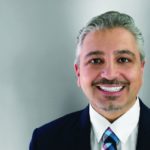 Payam Ataii, DMD, is an award winning graduate of Tufts Dental School who has treated more than a thousand patients with clear aligners and sleep oral appliances as mono and combination therapies at his private practice in Laguna Hills, California. Dr. Ataii has been an Invisalign® faculty member for more than 10 years and was awarded the “North America Educator of the Year” award in 2016. As an author, Dr. Ataii has been published in national and international peer-reviewed publications, as well as main-stream press and television. Over the years, Dr. Ataii has presented lectures to thousands of his peers, sharing the results of his research and his innovative practice growth techniques. Dr. Ataii has developed and continues to develop solutions to improve and simplify how dentistry is delivered to patients.He serves on multiple company boards and is a recognized key opinion leader.
Payam Ataii, DMD, is an award winning graduate of Tufts Dental School who has treated more than a thousand patients with clear aligners and sleep oral appliances as mono and combination therapies at his private practice in Laguna Hills, California. Dr. Ataii has been an Invisalign® faculty member for more than 10 years and was awarded the “North America Educator of the Year” award in 2016. As an author, Dr. Ataii has been published in national and international peer-reviewed publications, as well as main-stream press and television. Over the years, Dr. Ataii has presented lectures to thousands of his peers, sharing the results of his research and his innovative practice growth techniques. Dr. Ataii has developed and continues to develop solutions to improve and simplify how dentistry is delivered to patients.He serves on multiple company boards and is a recognized key opinion leader.
